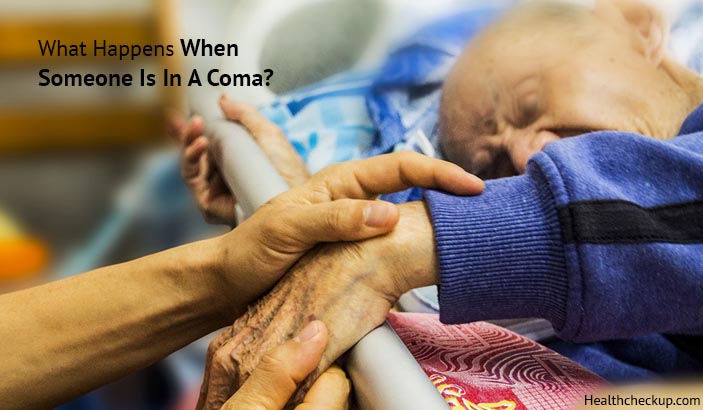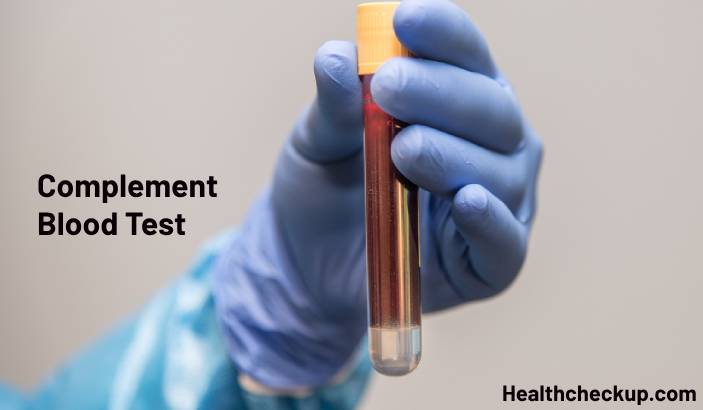What Is Coma?
Coma is an acute, life-threatening condition of unresponsiveness or a prolonged loss of consciousness. Coma implies dysfunction of cerebral hemispheres, medulla and brain stem structures. This article will let you know what happens in coma, types, and causes of coma and recovery time.
What Are The Causes Of Coma?
Coma can be of two basic types – Traumatic and Non Traumatic. Causes for non-traumatic coma are mentioned below
1. Structural Causes
- Cerebral hemorrhage
- Pontine or Cerebellar hemorrhage
- Cerebral or brainstem infarction (lack of blood supply)
- A cerebral or a brainstem tumor
- Subarachnoid, subdural and epidural hematomas
- Ruptured aneurysm
- Cerebral or cerebellar abscess (rare)
- Stroke
2. Metabolic Conditions (Deprive Oxygen Supply to The Brain)
- Massive blood loss due to trauma
- Hypothermia or hyperthermia (too low or too high body temperature)
- Intoxication due to alcohol, drugs or medications
- Infections
- Concussion or following seizures
- Electrolyte imbalances
- Nutritional deficiency
- Hypoglycemic or diabetic coma (due to severely low blood sugar levels)
- Organ failure (heart, kidneys, liver or lungs can cause accumulation of waste substances in the blood resulting in coma)
Head injury, stroke, drugs and toxin-induced and infections are some of the common causes of coma. In people above 40 years of age, stroke and metabolic causes such as diabetes, electrolyte imbalance and organ failure are seen commonly.
Often the mode of onset of coma indicates a probable diagnosis. Coma due to head injury is rather spontaneous as compared to coma from hypoglycemia which is more gradual.
What Happens When Someone Is In Coma?
- Due to head injury, infections or metabolic disturbances, the Reticular Activating System (RAS) becomes dysfunctional. RAS is responsible for maintaining arousal and wakefulness.
- When a person is in a coma due to any particular reason, he/ she are unaware towards self, time, place and other persons.
- A person in coma fails to respond to external events or stimuli and even to basic needs such as food and water.
- Involuntary functions of the body such as breathing and heart rate remain uninterrupted unless there is severe damage to brain functions.
- In a coma, the patient does not respond to painful stimuli or verbal commands.
- Patients who are deeply comatose are at risk of choking due to lack of nervous control over muscles of the face and throat. Such patients eventually require ventilator support in order to safeguard the airway.
- Changes in the respiratory pattern can be observed when a person is in a coma. The following breathing patterns can be seen:
-
- Cheyne-Stokes Breathing – A form of breathing which has alternating hyperventilation and apnea. This form of breathing can be seen in extensive brainstem damage and indicates a life-threatening condition.
- Apneustic Breathing – A form of breathing characterized by a sudden pause in inhalation. This breathing pattern occurs due to damaged pons.
- Ataxic Breathing – It is an irregular form of breathing due to the damaged medulla oblongata.
-
- A change in posture and sleeping position can be observed. Two typical positions which may be seen in comatose patients are:
- Decorticate – A sleeping position where the legs are extended and arms are flexed at elbows and turned towards the body.
- Decerebrate – A sleeping position where both arms and legs are extended. This position indicates a poor prognosis as it is seen in damage to the brainstem.
What Happens to A Person in Coma can be Identified on The Basis of one or Both Assessment Scales Mentioned Below
1. Glasgow Coma Scale (GCS)
- The GCS is a means to assess the level of consciousness of a patient.
- This scale is used for assessing eye-opening, verbal and motor response for all patients reporting to the emergency department with unconsciousness and head injury.
Glasgow Coma Scale, however, is of limited use in pediatric patients of up to 36 months of age.
- It is also used for subsequent assessment of patients who are admitted to the intensive care unit (ICU).
- Based upon the Glasgow Coma Scale, brain injury can be classified as minor, moderate or major.
- An additional feature has been added to the original eye, verbal and motor parameters. It is called the Glasgow Coma Scale – Pupils Reactivity Score (GCS-PRS).
| Glasgow Coma Scale (GCS) | ||
| Behavior | Response | Score |
| Eye-Opening | Spontaneous To verbal commands To pain No response |
4
3 2 1 |
| Verbal Response | Oriented to time, place and person
Confused but answers questions Inappropriate words Incomprehensible sounds No response |
5
4 3 2 1 |
| Motor Response | Obeys commands
The purposeful movement to a painful stimulus Withdraws in response to pain Abnormal flexion (decorticate posture) Abnormal extension (decerebrate position) No response |
6
5 4 3 2 1 |
| Total Score | Fully alert and conscious
Comatose Deep comatose or unresponsive
|
15
8 or less 3 |
| Glasgow Coma Scale – Pupil Reactivity Score (GCS-PRS) | ||
| Pupils not reacting to light | Score | |
| Both pupils
One pupil Neither pupil |
3
2 1 |
|
2. The Rancho Los Amigos Scale
- This scale is used to assess comatose patients after a head injury. It is called Levels of Cognitive Functioning Scale (LOCF).
- The Rancho Los Amigos scale is used to assess behavior and cognitive function of patients as they recover from the coma.
- This scale defines eight stages of recovery from coma. Yet, these are ideal stages which may not be necessarily seen in actual practice.
- Level 1 suggests non-responsive cognitive function and level 8 suggests appropriate functioning.
- This scale is often used along with the Glasgow Coma Scale to assess comatose patients.
| Rancho Los Amigos Scale | ||
| Levels
|
Response | Assistance needed |
| Level 1 | No response | Total assistance |
| Level 2 | Generalized reflex response to pain | Total assistance |
| Level 3 | Localized response – Blinks to strong light, turns away/towards the sound, responds to physical discomfort, inconsistent response to verbal commands. | Total assistance |
| Level 4 | Confused/ Agitated – Alert but extremely short attention span. Performs non-purposeful motor activities. | Maximal assistance |
| Level 5 | Confused/ Non-agitated – Complete attention towards surrounding environment, distractible. Inappropriate speech. | Maximal assistance |
| Level 6 | Confused/ Appropriate – Inconsistent orientation to time, place and person. Follows simple directions consistently. | Moderate assistance |
| Level 7 | Automatic/ Appropriate – Patient performs a daily routine with minimal confusion but in a robotic manner. Skills noticeably deteriorated. | Minimal assistance |
| Level 8 | Purposeful/ Appropriate – Patient responds appropriately to the environment and has a functioning memory | Stand-by assistance |
How Long Does Coma Last?
Coma can last for several days or weeks. There have also been cases reported where coma lasted for several months and even years (maximum duration being 42 years).
How Long Coma Can Last Depends Upon The Following Conditions?
- Mode of onset
- The underlying cause for coma
- Presence or absence of any associated complications
- How early the patient has received treatment since the onset of coma
- The extent of brain injury and neurological
Following treatment, patients can recover from coma, retain a vegetative state or die. The vegetative state can also last for several months or years. Similarly, a person in a deep coma doesn’t necessarily have slim chances of recovering; such patients can eventually recover completely.
Dr. Himanshi is a Homoeopathic consultant and currently working as a lecturer in Post-graduate faculty of Homeopathy, Parul University, Vadodara. Completed BHMS and MD in Homeopathy in January 2018 and also has a clinical experience of about 6 years. Personal interests include reading, spending time with family and traveling.








